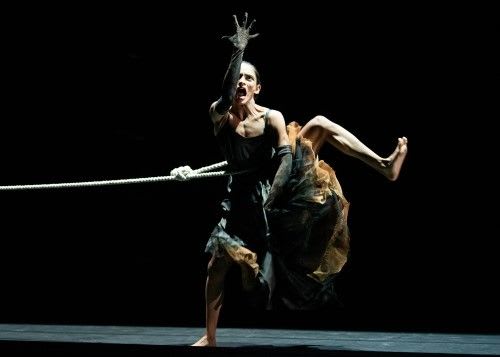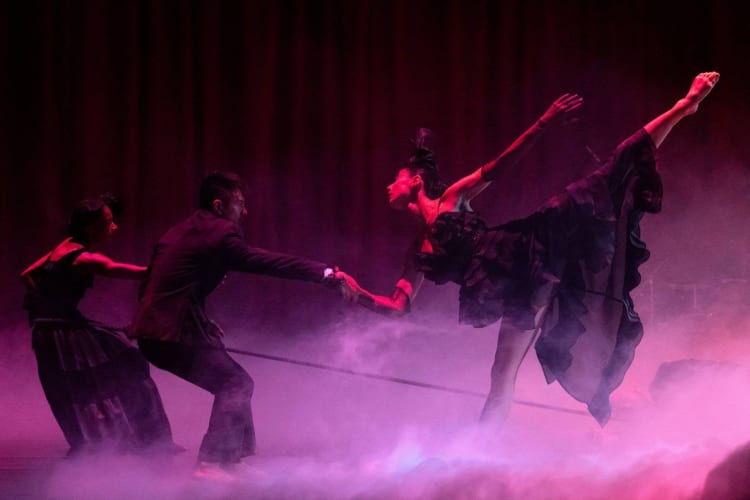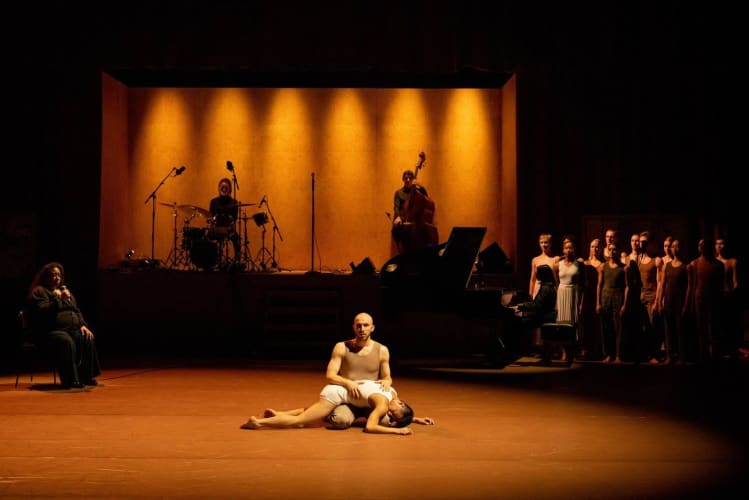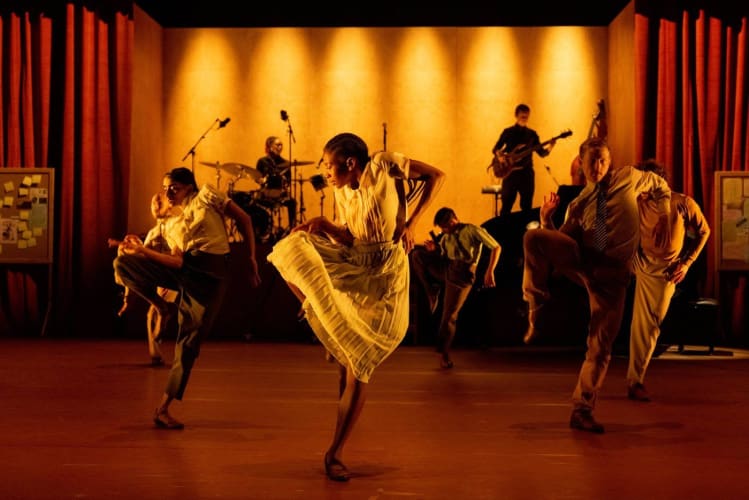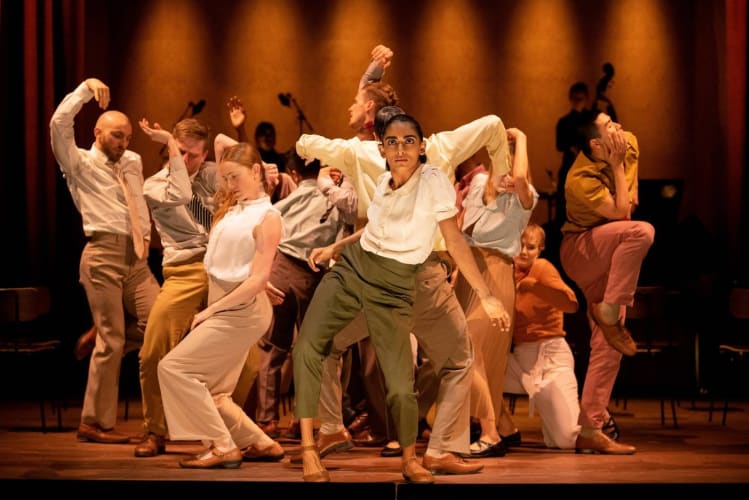Rambert, having already explored popularising the dance genre with Peaky Blinders: The Redemption of Thomas Shelby, now brings in elements of theatre with extensive spoken interludes to break the fourth wall between performers and audience in Ben Duke’s meta-dance comedy Death Trap.
Cerberus, the first half of the double bill, opens with the beginning and end of life. A dancer, in a spoken introduction, explains she did not write and does not really enjoy taking part in the dance in which one side of the stage represents life and the other death, and the dance is a journey between the two. A stagehand is worried that the audience might not appreciate the show is entirely fictional, and delivers a confused eulogy intended to reassure viewers no harm has been done to the dancer despite evidence to the contrary. When the stagehand’s efforts to dissuade other people from proceeding lemming-like into the afterlife fail, he decides to copy Orpheus and bring back his Eurydice from the Underworld. Of course, he doesn’t know how to play a lyre, but is confident nothing can go wrong.
The futility of trying to avoid the inevitable end of life is explored in absurd but relentless detail. The stagehand considers a range of increasingly desperate options to prevent dancers from exiting life, including stopping the driving drumbeat to which they dance and even catching them in a net. The increasingly comic frustration of the stagehand contrasts with the unspoken fatalistic determination of the dancers to reach their goal.
The centrepiece is an astonishing scene of the ensemble perfectly spaced apart as if on a mechanical production line, dancing simple identical steps across the stage then returning in a slightly different step but with the same emotionless precision. Despite grim aspects—one dancer is stripped and passed corpse-like into the underworld—there remains an underlying comic atmosphere: a dancer caught half-dressed hobbles along trying to put on her socks.
There is a satirical dig at the audience at the opening of Cerberus with a passive-aggressive announcement explaining the dancers are quite willing to pause mid-step while vital mobile phone calls are taken. The satire continues with greater intensity in the second half of the double bill, Goat, which pokes fun at artistic pretensions and the insensitive media.
A spiritual congregation gathers for a ritual intended to resolve an unspecified crisis. In the past, this would have involved sacrificing a goat, but due to the intervention of animal rights groups, a member of the congregation will be chosen to dance themselves to death. The ritual is recorded by a tactless journalist who thinks nothing of asking the potential sacrifice how long it will take for him to dance himself to death ("Don’t know, never done it before").
The choreography is sharply varied and danced to songs by Nina Simone sung live by Sheree DuBois backed by a three-piece band. The opening dances have a congregational mood with the ensemble tightly drawn together in the centre of the stage as if rising from church pews, eyes closed and swaying in spiritual ecstasy. This is in marked contrast to a circular tribal dance baiting and tormenting the proposed sacrifice. There is an oddly stiff and insincere chorus line serving as backing for a performance of "My Way". The human cost of the ritual is reflected in a tender duet to remind the audience the sacrifice will have an impact on more than just the person involved.
The opening sequence mercilessly mocks the pretensions of those who argue art can change the world. The tactless interviewer interrupts the dancers as they hold agonised poses to ask what their work is meant to represent, generating meaningless answers like the stigma of addiction, betrayal or a metaphorical hunger for expansion, prompting the reply, “to be honest, I wouldn’t have got that."
The spoken theatrical pieces ensure the satire and humour hit home, but, certainly in Goat¸ break up the fluidity of the dance and become a bit distracting. One can’t help but wonder if a more restrained approach—limiting the speeches to the opening and closing as prologue / epilogue—might have aided concentration on the dancing.
With Death Trap, Rambert pushes the boundaries of dance and produces a show which is irreverent and very funny.

